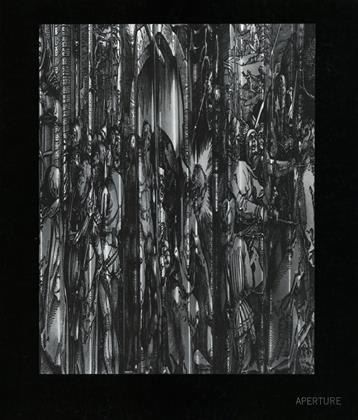leslie krims
Leslie Krims began by being an observer, and only later set himself the task of acquiring a means of expression. He has sought after the fugitive, fleeting emblem of present-day life, or the distinguishing characteristics of that quality which we call modernity. Often ephemeral, violent, weird and excessive, he has contrived to concentrate in his photographs the acrid bouquet of urban life; what Baudelaire described as the beauty of circumstance, the sketch of manners.
But with all their richness his photographs often appear simple, with an organization determined by the interest in a single object. However, the deceptiveness of this simplicity is most evident if one places his work beside baroque journalistic compositions which, in particular, lack psychological interplay and the sense of gesture. Krims’ photographs have the quality of the unexpected, of horror locked within a system composed of only energized fragments. Krims has a generous spirit for people and it is enriched and directed by the social movements of our time. Just as in the thirties much of documentary photography maintained a sentiment for rural traditions, which were valued because they were graphically remote and believed to be more eternal than the contemporary modes of the urban environment, so today there is a new sympathy in the observation of social life. It is not a criticism of manners, institutions, and ideas nor a belief that the social mechanicism has the potential of reform; rather, the trend is toward a concept of outright freedom as a basis for social life and the documentation of it. Leslie Krims directs us toward this more insurgent taste for life.
Peter C. Bunnell
 View Full Issue
View Full Issue
More From This Issue
-

Uelsmann’s Unitary Reality
Fall 1967 By Wiliam E. Parker -

A Meeting Of The Portland Interim Workshop
Fall 1967 -

Jerry N. Uelsmann: 1967, A Portfolio
Fall 1967 -
 Comment And Review
Comment And ReviewPhotography And The Mass Media
Fall 1967 By John Szarkowski -
 Comment And Review
Comment And ReviewThe Photographer’s Eye
Fall 1967 By Minor White -

Excerpts From The Critique
Fall 1967
Subscribers can unlock every article Aperture has ever published Subscribe Now
Peter C. Bunnell
-

A Portrait For Us Today—And Tomorrow
Spring 1968 By Peter C. Bunnell -

Bibliography
Winter 1969 By Peter C. Bunnell -

Jerry N. Uelsmann
Winter 1970 By Peter C. Bunnell -

Chronology
Winter 1970 By Peter C. Bunnell -

Bibliography
Winter 1978 By Peter C. Bunnell -

Comment And Review
Summer 1967 By Peter C. Bunnell, Frederick D. Leach, Jonathan Green, 1 more ...













